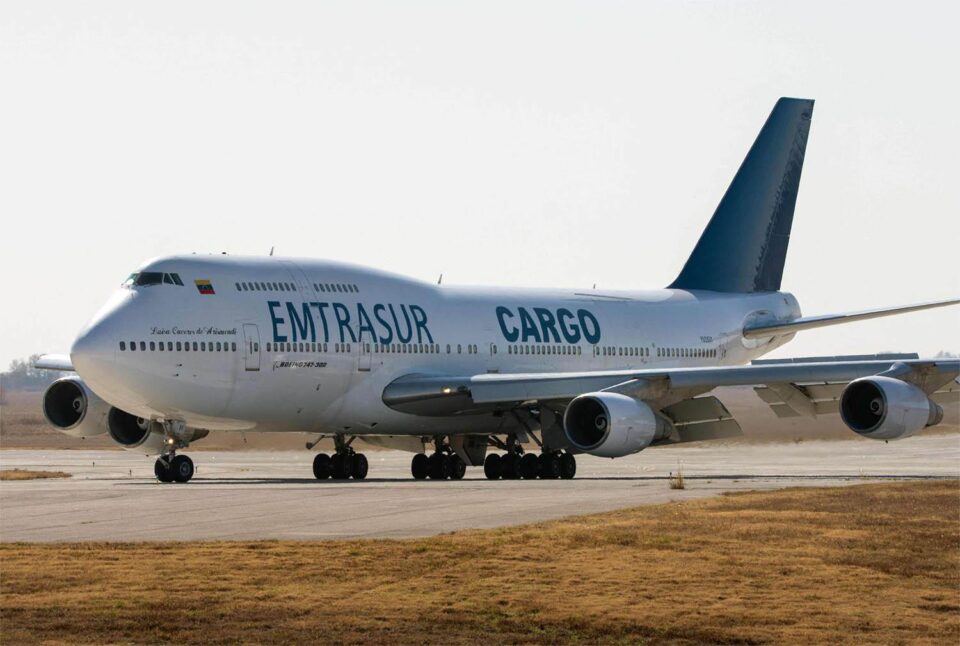Aerospace
Argentina seized a Boeing 747 in the midst of the confusion.

According to the Iranian news agency ISNA, a Boeing 747 belonging to the Iranian airline Mahan Air was detained in Argentina on Sunday.
According to ISNA, the Argentine government confiscated a Mahan Air Boeing 747 and leased it at the Buenos Aires airport to a Venezuelan state-owned airline. The report has not yet been verified by a third party.
A Boeing 747-300M with the registration YV3531 left Querétaro, Mexico, late on June 5 to transport parts to the automotive industry. Its final destination is Buenos Aires’ Ezeiza Airport. Its crew: We’ll get back to you on this as soon as we can.
Due to the fog, the plane bypassed Ezeiza and landed at 12 p.m. on June 6 in Córdoba. A few hours later, the plane took off from Cordoba to complete its voyage, arriving at Ezeiza around 3 p.m. Aside from the diversion, nothing notable has happened so far. But everything was going to change in an instant.
El Gobierno inmovilizó en Ezeiza un avión venezolano sancionado por Estados Unidos y le retuvo el pasaporte a cinco tripulantes iraníes. https://t.co/1XEkNEt8qo
— Aníbal Fernández (@FernandezAnibal) June 11, 2022
According to several sources, a number of government officials approached the 747 when it arrived in Buenos Aires. There was something weird going on with the jet, according to rumours that spread like wildfire, undeterred by poor weather.
The emphasis was concentrated on three items after clearing the cargo – there was nothing strange there, therefore the parts were released for the client to take – the aeroplane, the crew, and the aircraft.
The detention of this Boeing B747-3B3M, whose previous registration EP-MND under Iranian Mahan Airlines had been blacklisted by the US Department of Treasury 11 years ago, appears to have sparked confusion.
Within a year, the aircraft’s ownership changed, and the current registration ‘YV3531’ now belongs to ‘Emtrasur Cargo,’ a Venezuelan affiliate of Conviasa, founded in November 2021.
According to reports in the Argentine press, the plane was leased by Venezuela’s state-owned Konviasa Airlines. According to some sources, the imprisoned crew was related to Iran’s Islamic Revolutionary Guard Corps (IRGC).
Mahan Airlines, on the other hand, disputed the accusations, claiming that the plane’s ownership had been transferred to a Venezuelan business for a year and that it had not been leased.
#B747 #Iran #Argentina #Boeing

Aerospace
Boeing Transfers Rocket Stage to NASA, Paving Way for Human Moon Mission

Boeing has achieved a significant milestone by providing NASA with the second core stage of the Space Launch System (SLS) rocket.
This crucial component, crafted at NASA’s Michoud Assembly Facility (MAF), is set to propel the Artemis II crew into lunar orbit, marking humanity’s return to deep space after a 50-year hiatus.
The monumental Boeing-built rocket stage, the largest element of the Artemis II mission, will embark on a journey aboard the Pegasus barge, traveling 900 miles to NASA’s Kennedy Space Center.
Comparison of two legendary aircraft B777x vs B747 aircraft:Click here
Upon arrival, it will be meticulously integrated with other essential Artemis II components, including the upper stage, solid rocket boosters, and NASA’s Orion spacecraft within the iconic Vehicle Assembly Building. This intricate integration process is a vital step toward the eagerly anticipated Artemis II launch, slated for 2025.
“Boeing-built products helped land humankind on the moon in 1969, and we’re proud to continue that legacy through the Artemis generation,” remarked Dave Dutcher, vice president and program manager for Boeing’s SLS program. “Together, with NASA and our industry partners and suppliers, we are building the world’s most capable rocket and paving the way to deep space through America’s rocket factory in New Orleans.”
NASA, Lockheed Martin Reveal X-59 Quiet Supersonic Aircraft:Click here
The delivery of Core Stage 2 marks a significant achievement in the evolution of the SLS rocket. Towering over 200 feet and powered by four RS-25 engines, this core stage, coupled with two solid-fueled booster rockets, will generate a staggering 8.8 million pounds of thrust. This immense power is crucial to launching Artemis II and future missions into the vast expanse of space.
The SLS rocket stands unparalleled in its capability to transport both crew and substantial cargo to the moon and beyond in a single launch. Its extraordinary capacity will facilitate the delivery of human-rated spacecraft, habitats, and scientific missions to destinations including the moon and Mars, ushering in a new era of space exploration.
-

 Travel1 week ago
Travel1 week agoAir India to Expand US Operations with Three New Routes After a Decade
-

 Travel2 weeks ago
Travel2 weeks agoWhy We Should Avoid These Stamps in a Passport
-

 Airlines1 month ago
Airlines1 month agoInvestigations Reveal Fake Chinese Titanium in Boeing and Airbus Jets
-

 Tech4 weeks ago
Tech4 weeks agoChina’s CATL Plans 1,800-Mile Electric Plane Launch by 2027
-

 Airport3 days ago
Airport3 days agoTop 10 Largest Airports in the World by Size
-

 Aerospace4 weeks ago
Aerospace4 weeks agoChina’s Fighter Jets Turn Wings into Autonomous Drones
-

 Airlines4 days ago
Airlines4 days agoAir India Rolls Out A350s for Delhi-New York JFK and Newark Routes
-

 Defence3 weeks ago
Defence3 weeks agoBoeing Enhances Chinook with New Engines and Block II Upgrades at $96 Million







